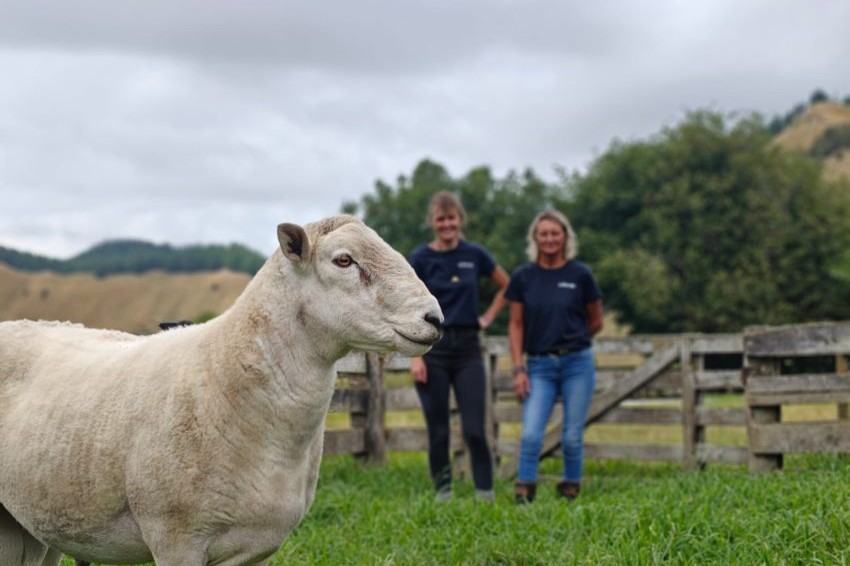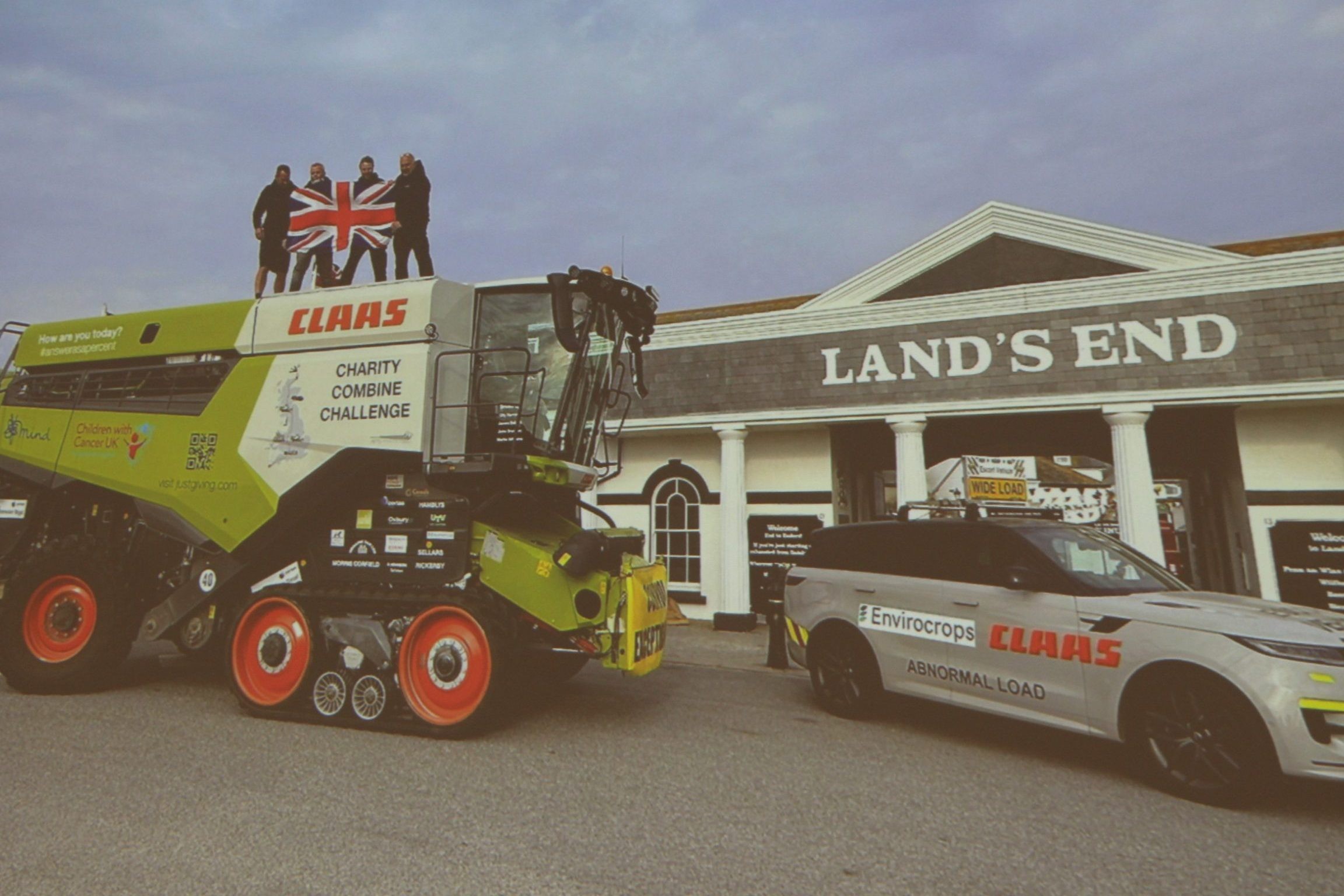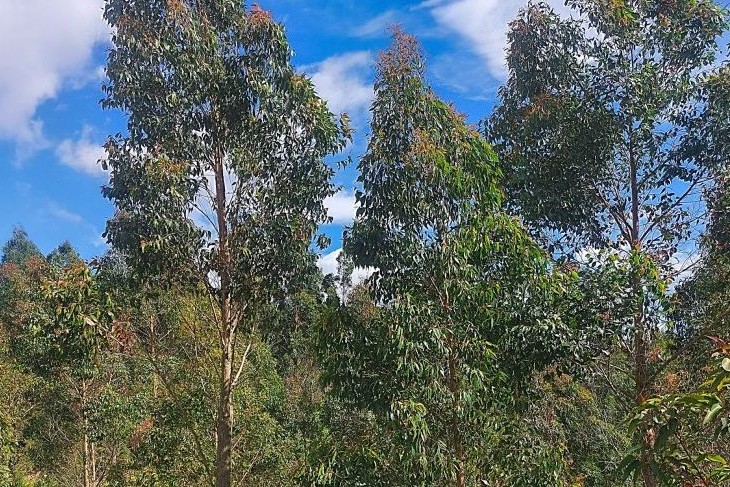An integrated system
The pros and cons for integrating livestock and arable production were discussed in depth and from many angles at a recent industry field day, Sandra Taylor writes.

N ew Zealand is one of the few countries in the world where livestock is integrated into arable systems for the mutual benefit of both.
While livestock thrive on grass-seed crops and pasture grown in the restorative phase of a cropping rotation, arable farms benefit from livestock-derived nutrients, cashflow, weed control, residue management, and improved soil quality due to below-ground soil organic matter returns.
Speaking at a recent Beef + Lamb NZ and Foundation for Arable Research (FAR) field day, FAR’s Abie Horrocks said the benefits of integrating livestock into an arable system were made very clear when looking at soil carbon stocks.
Under pasture, soil carbon stocks were 110–140 tonnes/ha, and under a mixed arable/livestock system they were about 90t/ha, but in soils overseas that had been continuously cropped, soil carbon stocks were closer to 10t/ha.
In integrated mixed systems carbon sat in the top 0–15cm of soil.
“This reflects the diverse rotations in NZ’s arable systems and the frequent inclusion of restorative phases,” Horrocks said.
The challenge was striking the right balance between restorative and depletive phases.
“It doesn’t need to be livestock but that’s an easy win.”
As many as 93% of FAR farms surveyed had some livestock in their systems and other countries were now looking to NZ to learn how livestock can benefit arable systems.
Horrocks said removing livestock from mixed rotations may have unintended consequences with increased pesticide use.
Grazing grass-seed crops
FAR’s Richard Chynoweth talked about the grazing of seed crops and said the practice had both pluses and minuses, as the main aim with seed crops was to grow biomass which captured sunlight which ultimately drives grain and seed yields.
With early sown ryegrass seed crops, there’s a lot of opportunity for grazing before the crops are closed up in late spring or at the beginning of stem elongation. This was often at Growth Stage 30–31.
Defoliating crops through grazing in mid-February through to mid-March benefited the crop by stimulating tiller formation.
This defoliation can increase seed yields by as much as 20% compared to not grazing grass-seed crops.
“Grazing is always beneficial to ryegrass seed production, but closing dates are important so the growing points are not removed in that spring period.”
This was the opposite to Italian ryegrasses where late grazing will remove the main growing point and increase the number of seed heads and potential yields.
Chynoweth said there was potential to graze cereal crops, which could be beneficial by removing diseased biomass, but it was important to close the crop off before stem extension.
“Between March and June there is probably more potential to graze cereals than we may believe.”
 Stock options in arable systems
Stock options in arable systems
Speaking at the field day, farm systems scientist Tom Fraser said to get the best results from livestock in an arable system, farmers needed to understand and identify the goals for their farm systems.
“Are livestock a tool to achieve higher returns for a crop, or an alternative income?
“The ideal is to incorporate animals into an arable system, without compromising that system, to generate extra income.”
Fraser said there were a number of livestock options for arable farmers and these included prime lamb contracts, grazing replacement ewe hoggets and trading old ewes.
“You don’t have to tie yourself into lamb-finishing contracts.”
When deciding on stock classes, factors such as crop closure needed to be taken into consideration.
“How will you feed your lambs when the crops are closed up?”
Fraser said many hill country farmers struggled to get their ewe lambs up to good weights and he believed there were opportunities for arable farmers to enter into contracts with breeders to grow out their hoggets.
“If you can get alongside a breeder and work out a contract that suits both parties, there are huge opportunities.”
Factors that needed to be worked out included when they arrive, when they go home and flexibilities within these timeframes.
Fraser also raised the possibility of arable farmers buying old ewes and putting weight on them before selling them for processing.
Most important was the decision of when to sell stock, and at the same time ensuring the main goal, which could be arable production, wasn’t compromised.
“Set a date for when preparation needs to start for a new crop and stick to it.”
A good example was when a summer crop, only intended as a break crop, kept growing. The temptation was to keep grazing it, therefore delaying the establishment and compromising the yield potential of the subsequent crop.
Similarly, with winter trading lambs, setting target end-weights and dates would help ensure they were gone before compromising the arable side of the business.
Genetically, all lambs were capable of growing 300g/day and to realise this potential, the lambs just needed feeding, Fraser said.
The best forages for driving lamb growth rates were grass and clover and greenfeed, and while the quality was always good in winter and spring pastures and summer forage crops, grass quality fell in summer and autumn.
“You can’t expect high animal growth rates over December, January and February.”
Faster growing lambs were far more efficient in every respect, particularly in greenhouse gas emissions.
A lamb growing at 300g/day will produce half the emissions of a lamb growing at 100g/day.
“This is what we may have to think about in the future,” Fraser said.
When arable farmers buy lambs in February, many still want them on hand in September to graze grass-seed crops to help lift yields and reduce input costs. This could be a disincentive to fast finishing. There was also the incentive to hit the higher October schedule prices.
Farmer experience
Arable farmers Erica Callaghan from Fairlie, Hamish Marr from Methven, Pieter Taco (PT) Bierema from Mitcham and Darryl Oldham from Wakanui all outlined the role livestock played in their businesses and the benefits and challenges they bring.
Callaghan said they only introduced livestock into their 1800ha cropping operation in recent years. Store lambs were bought in March and in June and July and 100 calves were carried through on the farm’s lighter soils until they were R2s.
“What works really well is cash flow. When we had to change our cropping mix we had another source of income, which spreads cash flow through the year.”
The biggest challenge was bringing lambs into a broadacre system and managing the regulations around winter grazing.
Hamish Marr and his family farm 500ha, with 400ha in arable crops and 100ha in pasture. He said they have two very separate crop rotations: one based on cocksfoot seed production and the other on pastures. Agronomically, they were kept very separate, but both the cocksfoot and pasture paddocks were in the ground for five years.
They grazed dairy heifers and cows and 4000 lambs for a neighbour and while they used to trade lambs, Marr said it got too complicated as they had to close up cocksfoot crops in May.
He said pasture was the best break crop of all and for someone who was always thinking about chemical resistance, having paddocks in pasture or cocksfoot seed for five years meant it could be 10 years before they were back in a specific paddock with the same crop and the same chemistry.
Livestock also helped spread risk in their business as unlike crops, they were not going to be destroyed by bad weather.
Winter was the biggest challenge for the Marrs and dealing with the impact livestock had on soils.
For the Bierema family, store lambs were an integral part of their 500ha arable business. They start buying lambs at the end of March and sell them from June to October which is when they start closing their grass-seed crops off. The lambs are wintered on forage oats.
Bierema said they saw themselves as arable farmers and lambs were complementary to that.
“Lambs are a good fit. They are good at controlling ryegrass seed crops and after harvest will clean up ryegrass and clover seed crop residuals.”
The challenge for them was reliability of supply of lambs when they wanted them.
Darryl Oldham and his family farm 200ha with one-third cereals, one-third grass and one-third potato crops.
He said they were wintering dairy cows, but their proximity to the river and the implementation of intensive winter grazing regulations was a catalyst for them to move to trading lambs. While they found they had a lot more flexibility for when they call buy and sell lambs and could graze them over the whole farm, unplanned pregnancies were a challenge.
Bierema said unplanned lambs were a huge issue for many arable farmers, but they got around this to some extent by separating the ewe and ram lambs as soon as they arrived on farm. It does mean sexing every lamb as they’ve found earmarks to be unreliable.
Building relationships
The long-term availability of store lambs as ewe numbers continued to decline and the building of relationships between commercial breeders and hill country farmers looking for grazing was discussed throughout the field day.
Overall, the feeling was that while there were significant opportunities for arable farmers to get alongside hill country sheep farmers, there were also challenges. These included what to feed sheep once grass-seed crops had been closed off, or conversely, sheep farmers wanting their sheep back before grass-seed crops were ready for grazing, which could result in compromised yields.
Trust and flexibility were the key ingredients to successful grazing relationships and the willingness to compromise.
Tom Fraser summed it up: “The relationship needs to be a win-win and both parties need to be prepared to compromise.”
Up[date on drench resistance
North Canterbury vet and wormwise facilitator Sarah Williams gave an overview of drench resistance and the emergence of triple combination drench resistance in both islands, particularly the North Island.
Vets were also reporting resistance to the new actives, namely Startec and Zolvix, she said.
The biggest risk for arable farmers was buying in resistance with trading lambs. Williams said when trying to prevent resistance becoming an issue, a quarantine protocol should be adopted, rather than just a quarantine drench.
This could include giving the lambs a fully effective combination of Zolvix Plus and Startech (given separately, not mixed together) and the stock being held in a holding area for 24 hours to empty out any residual worm eggs.
Ideally, finishers should find out where the lambs have come from and that farm’s drench resistance status.
Ten to 14 days after the quarantine drench, a faecal egg count (FEC) will show whether or not that drench had been effective.
“That’s just risk management,” Williams said.
“If the quarantine drench hasn’t worked then you get to fix the problem quickly.”
Drench frequency depends on the farming system. Clean feeds (new crops or pastures or areas where cattle have grazed for long periods) will have a low parasite larval challenge and this was where arable farmers could have an advantage.
“Knowing the grazing history of paddocks can be useful to understand drench frequency.”
Measuring liveweight gains and carrying out FECs were ways to monitor worm burdens.
“It comes down to farm-specific management, not recipes.”
Williams said refugia was a tool to prevent drench resistance becoming established on a farm. This meant maintaining a population of worms that had not been exposed to drench. These worms reproduce mostly susceptible worms.
Refugia can exist both in the animal and pasture.
It was much easier to maintain refugia on breeding properties and while it was more difficult on cropping farms, it was still possible, although it required more thought and planning, Williams said.
Other animal issues arable farmers needed to consider were clostridial protection, particularly when grazing high octane pastures or forages, and trace elements including selenium, copper, iodine and vitamin B12.
Nitrate poisoning can be a real danger in autumn and a simple test could prevent stock losses.
SMCO or kale anaemia can be a problem on brassica crops and bloat a risk on clover and kale crops.
To allow rumen microbes to adjust to a new feed, the transition onto crops and forages should be a slow process.
Another factor arable farmers needed to consider was feed composition and whether the feed on offer meets animals’ energy, protein, fibre and micronutrient requirements.
Williams also stressed the importance of not transporting heavily pregnant or lambing animals, which could be an issue for arable farmers. There was a danger when buying store lambs for winter trading that the ewe lambs may have been inadvertently mated.




